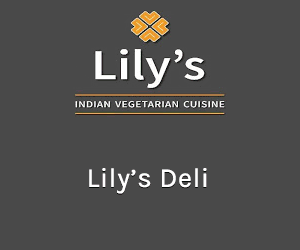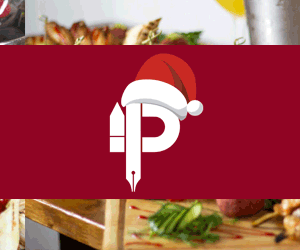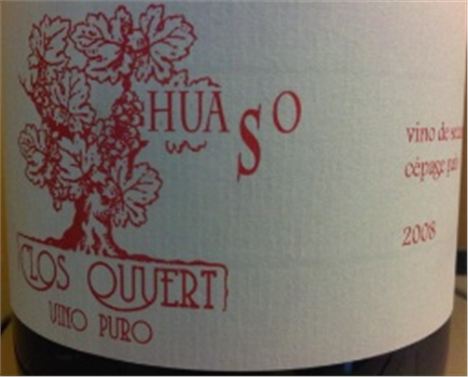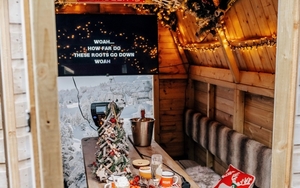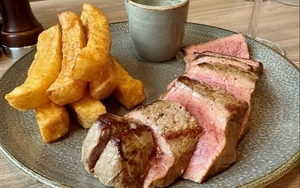THE Brazilian wine industry’s social media driven campaign ‘Wake up the Brazilian in you’ can mean different things to different folk – take perhaps those well-trimmed ladies, who know what a Tan is, but not a Tannat (a grape variety transported from South West France to South America, if you must know).
Some folk are tipping Chile as outsiders for the World Cup. Worth a bet. I’d back a characterful wine like this in a penalty shoot-out any day.
The Tannat from Pizzato I tasted at a Brazilian Wine Masterclass at Old Trafford’s The Point smelt the real deal but collapsed into echoes of Campbell’s tomato soup on the palate. Far better was Salton Intenso Cabernet Franc 2012, a food-friendly cocktail of blueberry, balsamic and hard-to-pin down spices, stocked at £10.49 by Manchester’s ever-adventurous Smithfield Wine.
Ahead of the World Cup there’s a big push to promote Brazilian wine. You may not have tried it yet, but it’s out there – 40 million litres of wine are produced each year in the country from six wine regions, ranging from one near the Equator, producing nine months in the year to cool climates in the south, where an ice wine is made. Well, it is a vast country.
Brazilian wine territories are very different for the Old World
Some 38 per cent of its wine is sparkling and affordable...and they are what to target on, whether it is Traditional Method dry bubbly such as the biscuity Miolot Brut Millesime, imported by Bibendum, or the sweeter, more attractive Aurora Sparkling Moscato Rose, available for a tenner by Jane Cuthbertson’s award-winning Barrica Wines outside Preston. At 8.5 per cent, you can celebrate England’s unexpected World Cup triumphs late into the morning. Visit the upcoming website] to learn more about Brazilian wines. For the chance to win a trip to Brazil visit here.
The country’s wine is covertly spreading into unexpected places. The other night, wishing the (iPad-centric) wine list in Australasia was a little more encyclopaedic, I fell back on a Seival Estate Pinot Grigio/Riesling as an aperitif before my tempura softshell crabs scuttled over. It costs £6.25 a small glass, £24.50 a bottle; it’s far superior to all the joyless Pinot Grigio being hawked around town and eventually, some Riesling character showed through. More a Dunga than a Ronaldhino, though.
Brazil are obviously favourites as host nation, but Argentina have a pedigree too, in football terms and, as a wine-producing nation, a far superior profile. The quality is evident in the Mendoza-based Sottano range stocked by Reserve Wines of West Didsbury. The big hitters, Sottano, Reserva Malbec 2010 (£15.99) and Sottano, Reserva De La Familia Cabernet Sauvignon 2009 (£19.99) are uncompromisingly intense.
Sottano
This Reserva Malbec makes up for other lacklustre examples attempting to capitalise on ts current popularity. Dark in colour, it smells of white pepper and cloves and on the palate is velvety smooth, the obvious new oak quite discreet. I drank it with roast goose breast and red cabbage and it worked a treat.
The Reserva Cabernet is even, more opaque with chocolate and smoke on the nose and a long satisfying blackberry fruit finish. It’s a big flavour, complex wine; the entry level Sottano Cabernet Sauvignon, at around half the price, is less intense, but more approachable with oodles of cassis fruit. Lovely.
Reserve also stock, at £10.50, the widely available white Famillia Zuccardi 'Series A' Torrontes 2011, all sherberty/talcum on the nose, almost off-puttingly aromatic, but redeemed on the palate by a swoosh of refreshing acidity.
Argentina, of course, along with neighbours Chile and South Africa, is a stalwart of Fairtrade wine production. The Co-operative is celebrating 10 years of promoting this way of helping so many under-privileged communities, with 20 per cent off many bottles in its own-brand range during Fairtrade Fortnight (24 February-5 March). They are calling it the Fairtrade Challenge.
Well it has often been challenge across the decade. Weighing up ethical obligations against a raft of often dull wines. Even now, with improved winemaking in the prime Fairtrade wine countries, South Africa, Argentina and Chile, I’d advise sampling cautiously across what seems a bargain range.
Certainly go with The Co-operative Fairtrade Pinot Grigio Argentina 2013 – yes, the dreaded Pinot Grigio – has a pleasant tropical fruit nose and a soft melony palate with a bedrock of acidity. It’s down from down to £5.59 from £6.99.
Of the reds I’d recommend The Co-operative Fairtrade Argentine Malbec 2012 (down to £6.79 instead of £8.49) is robust, oaky, spicy wine built for grills and roasts. Let it breathe a bit first, mind.
Patagonia is perhaps Argentina’s most undervalued wine region I’ve had some impressive Pinot Noirs from there – result of ideal conditions for slow ripening. Away from Fairtrade, the Co-operative stocks a Patagonian Cabernet Merlot 2012 from Vinalba (currently down from £9.99 to £7.99). It reeks of cherry and mint and the flavour is just as ripe and fulsome with smooth tannins and an extend finish.
The Wine Society certainly has faith in South America’s value for money quality. It has been running a promotion offering 'the Best of Chile, Argentina and Uruguay at £8.50'. They know what they are talking about. In 2013 The Society’s Chilean range (vineyards in the thin long country pictured at top of the article) was once again voted the country’s best by the IWC (International Wine Challenge), for the seventh time in the last eight years (the Society’s Chilean Merlot at £6.75 is an old favourite of mine).
New to me from that country, though, was the De Martino Gallardia del Itata Cinsata £8.95). Cinsata? You probably know it better as Cinsault, that heat-tolerant, thick-slinned grape that adds softness to red blends in France’s Languedoc. This Chilean cousin shares the softness but has a savoury pepperiness.
A regular Chilean favourite of thrdse pages is the Yali National Reserve Viognier 2012 (Majestic, £9.99), a delicately assertive citrussy and melony white that demands to be sipped in the garden. Come on spring!
Grapes do get about a bit these days. I expect it is Argentina’s strong vinous links with Italy that inspired Fiano plantations up in the 1,200m high Famatina Valley. The Faldeos Nevados Fiano 2012 (£7.75) is a match for those tense, minerally whites under that name that hail from the Campania.
By the way I have a tip for you here. To gain access to these wines you have to be a member of The Wine Society. Just buy one share for a one-off £40 and guarantee lifetime membership. It will repay many times over.
Of course, some ‘refugee’ grapes are harder to pin down. Take Huaso. It’s another name for Pais – until overtaken by Cabernet Sauvignon at the turn of this century, it was Chile’s most planted varietal (just to confuse matters, in Argentina it’s known as Criolla Chica).
It has traditionally produced a thin, workaday tipple, but in the hands of the innovative Chilean producer Clos Ouvert, Huaso is a major player. I came upon these the other day in Per Tutti, jolly Med food eaterie and Prosecco bar on Liverpool Road (opposite the Hilton).
I wanted something sturdy to go with a meat array that included bone marrow and chicken livers (offaly good, as it happens). At £35, Huaso, Clos Ouvert 2008 was a stab in the dark, almost Amarone like at first, then slowly, as it opened, out a sensory revelation.
Huaso Clos Ouvert
Owner Chris Buckley sources it from the Settle-based biodynamic specialist Buonvino, who also supply some of his more some of his more recherche proseccos that go down a storm at Aperitivo hour. The Huaso, rich and concentrated (14.5%) with a powerful acidic spine that suggests it has legs, is available at £25 a bottle via Buonvino.
Some folk are tipping Chile as outsiders for the World Cup. Worth a bet. I’d back a characterful wine like this in a penalty shoot-out any day.





